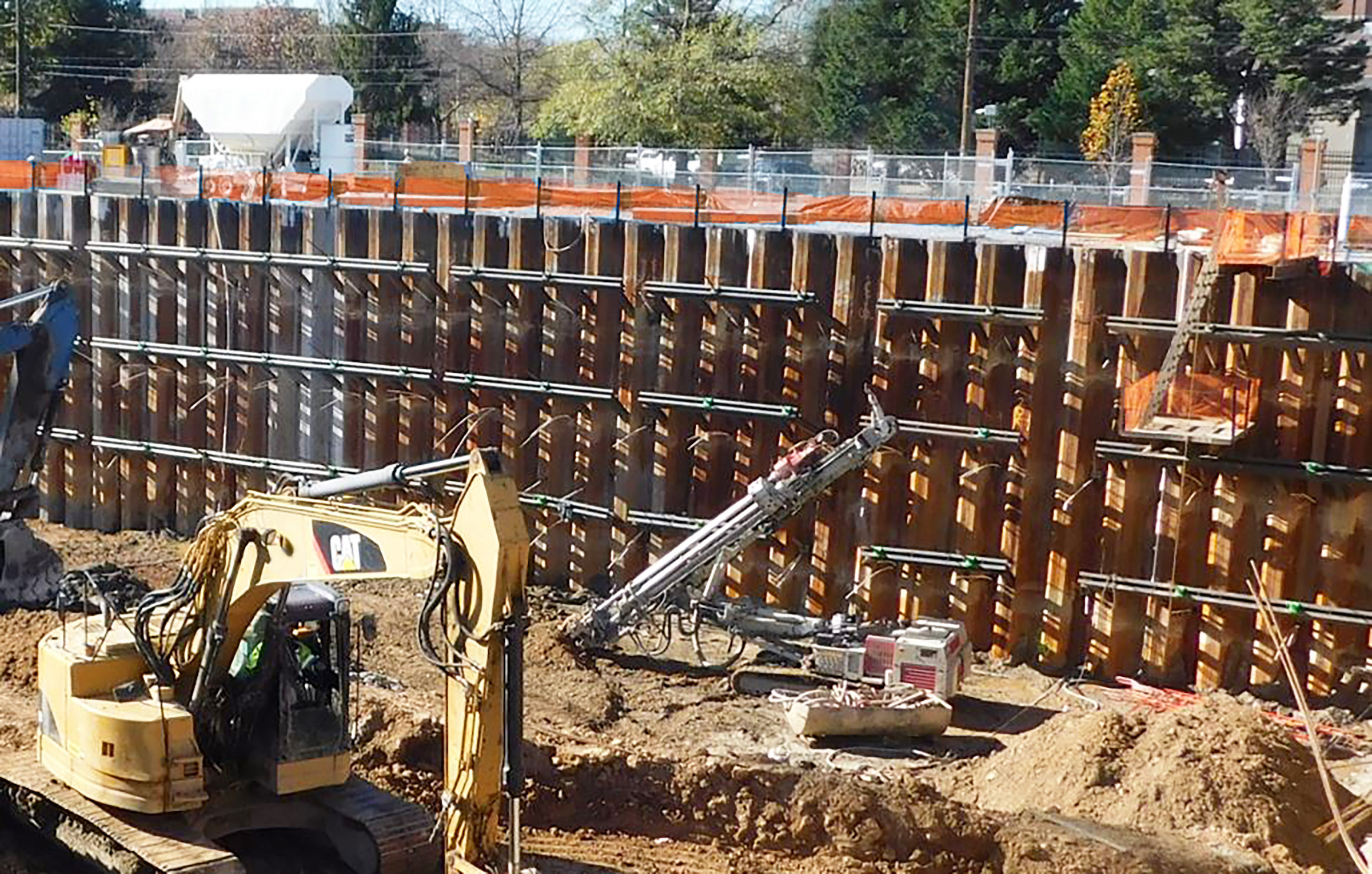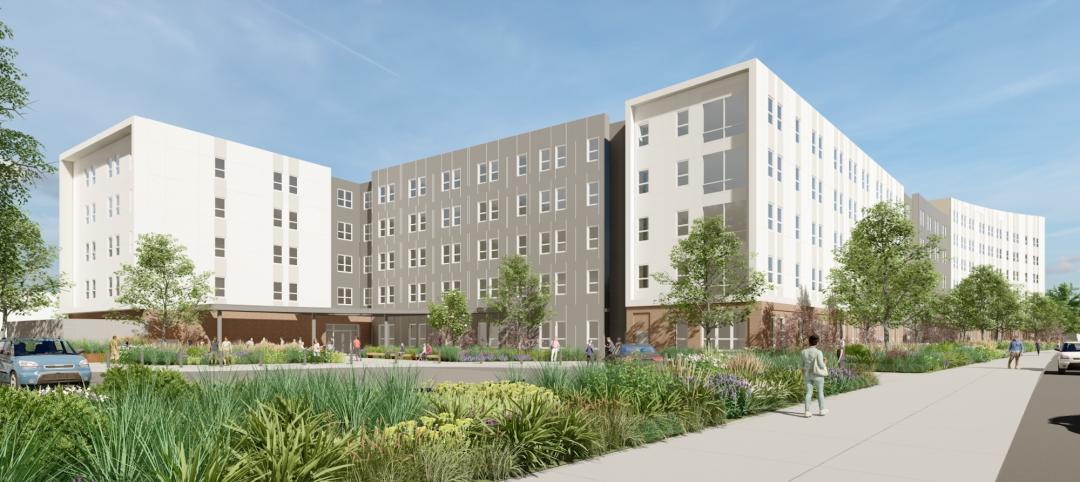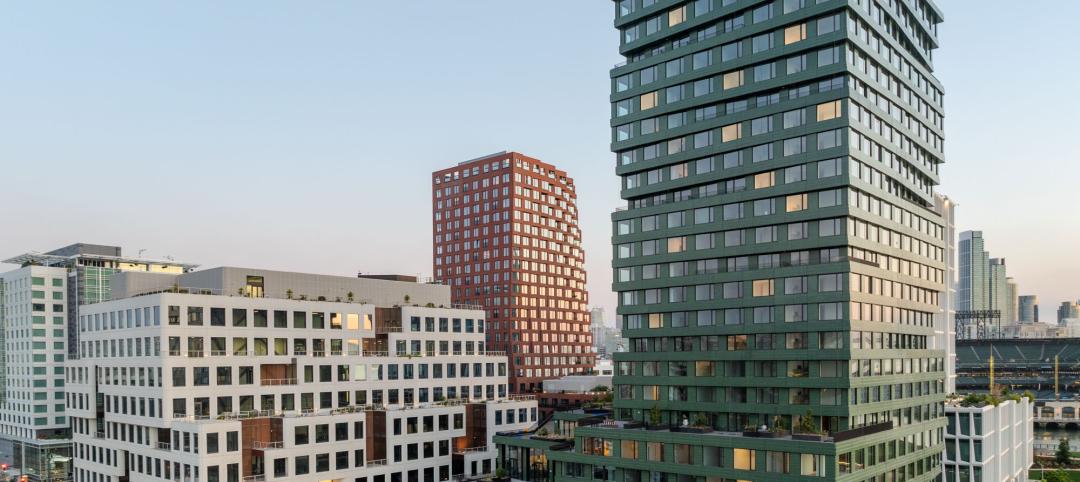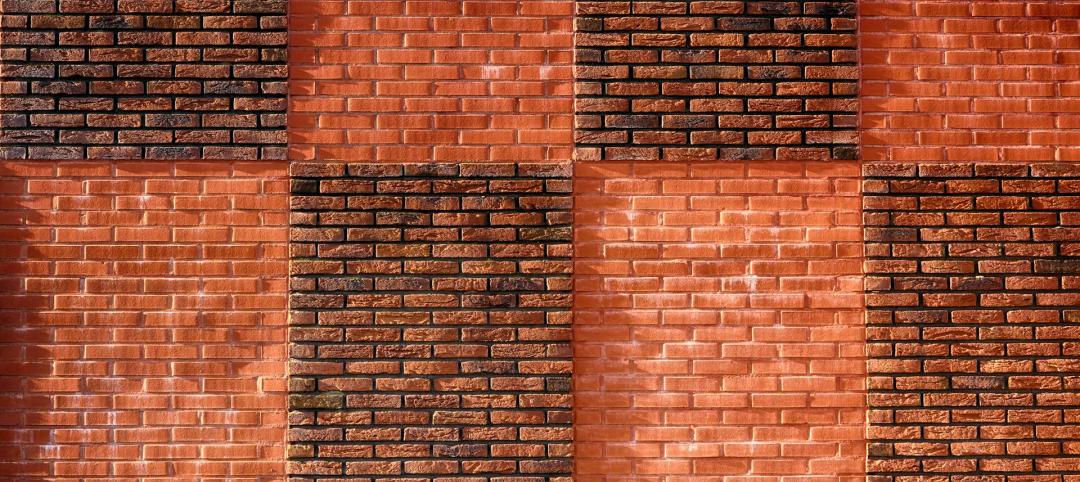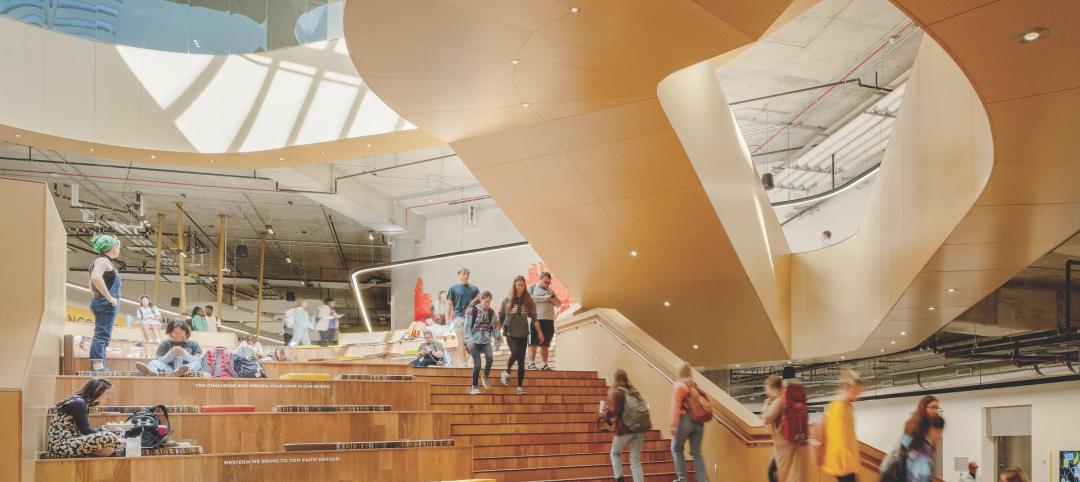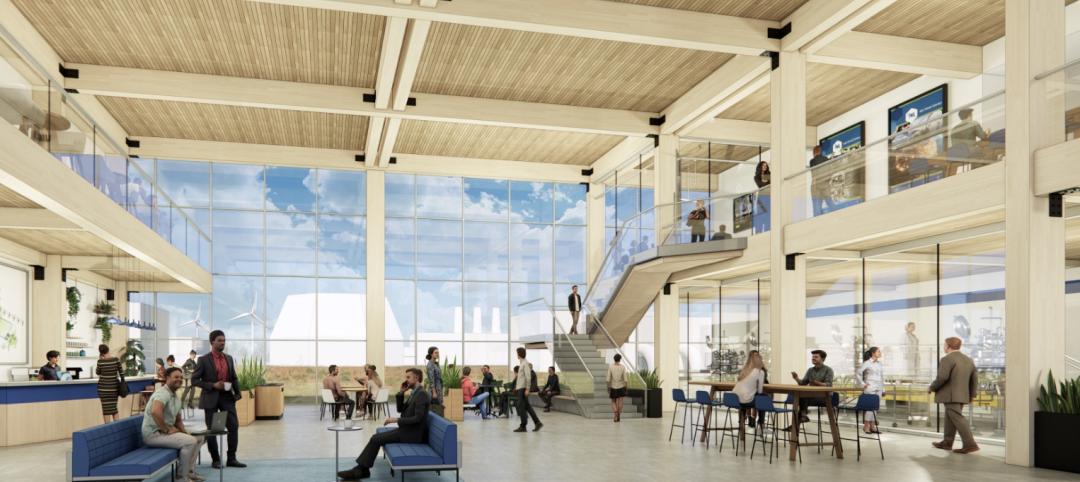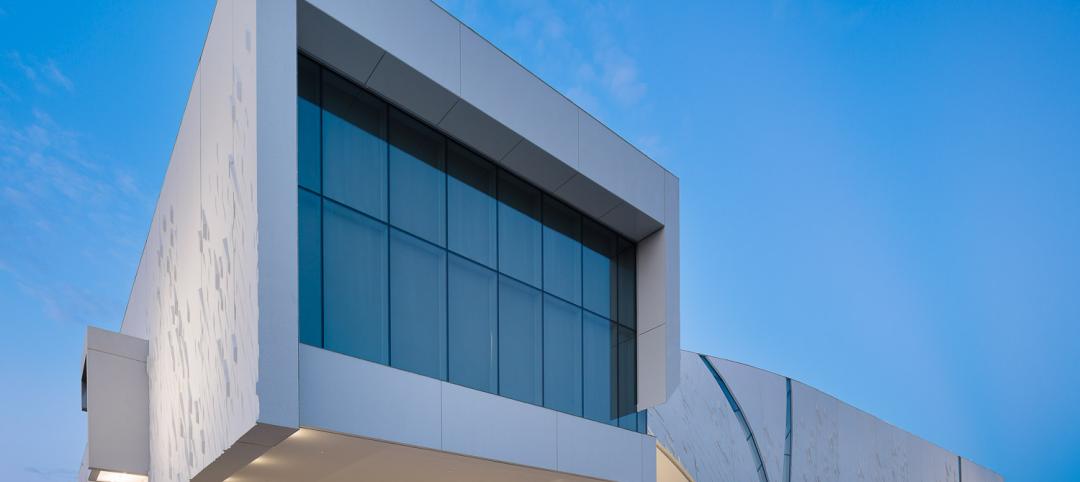Steel sheet piles have more than a century-long history of being used to support excavations for buried structures (Figure 1). During the construction process, the sheet piles traditionally provide earth retention and, in conjunction with a dewatering system, control of subsurface water into the construction site (both for leakage through the sheet pile system and for seepage below the sheet pile system).
In contemporary building development projects and in the context of subsurface water control, the role of the sheet pile system is typically temporary, until a dedicated waterproofing layer is applied to the building’s foundation wall.
However, for projects that do not include moisture-sensitive below-grade spaces, project teams sometimes elect to forego foundation wall waterproofing and rely instead on sheet piles alone for semi-permanent or permanent reduction of subsurface water. One example project application is a wall demarcating adjacent portions of a multi-phased below-grade garage (where subsequent phases of the below-grade structure will be constructed several years after the initial phase).
To implement this sheet pile “water management wall” approach successfully, multidisciplinary teams must closely coordinate to set appropriate expectations, assign and execute design and construction roles, and incorporate technical considerations that are not otherwise a focus of traditional sheet pile support of excavation (SOE) design. In this article, we explore aspects of sheet pile subsurface water control systems for buildings organized by the project’s primary stakeholders and considerations within their purview.
Owner/Developer
It is vital that the Owner/Developer’s project team be informed with reasonable expectations of what will be required from their capital program during the service life of a building’s below-grade water management system. Fundamentally, this includes the knowledge that the success of the sheet pile water management wall’s long-term performance will rely on maintenance activities. In developing a program to manage periodic water infiltration (leakage) in service, the Owner/Developer should understand that such a program will likely include the following:
- Accessing and cleaning an internal drainage system at the base of the sheet pile wall.
- Maintaining the drainage discharge system (e.g., sump pumps, piping, and associated backup emergency power).
- Accessing the interior face of the sheet pile wall to perform leak remediation measures (e.g., chemical grout injection) if the leakage increases to a level the drainage system cannot reasonably manage.
- Treating contaminated groundwater (if applicable; see Environmental Engineer section below).
Architect
As part of their role in developing the project’s overall design documentation, the Architect prepares construction drawings and specifications and coordinates with subconsultants who prepare specific aspects of the design. The sheet pile water management wall is inherently multidisciplinary, but the architectural details can help synthesize the basis-of-design for the architectural, structural, and plumbing features of the design.
If other foundation elevations or the underside of the slab is covered in waterproofing, the Architect (and their design consulting team, e.g., a Building Enclosure consultant) should consider and establish details for the integration between the sheet pile water management wall and the below-grade waterproofing system.
If the Architect decides to incorporate an interior partition to conceal the sheet pile wall, the design should account for the Owner’s building management personnel's continuing need to periodically access the interior face of the sheet piles to perform the maintenance activities described previously. If interior programming would not allow the partition to be offset from the wall by a substantial distance, the design should seek to avoid scenarios where a partition that is closely offset from the sheet piles unnecessarily commits the Owner to costly and logistically challenging Confined Space operations or total partition demolition upon the need to access the sheet pile wall face.
One appropriate design strategy would be to use partition systems that can be readily removed/reinstalled by the Owner’s maintenance personnel. Other design decisions that can be reflected on the architectural details include raising the bottom of the partition on a concrete curb to create a “gutter” to collect and divert leakage water to internal drains at the bottom of the sheet pile wall. The collected leakage water would be directed to sump basins that pump the water from the below-grade spaces.
Structural Engineer
The Structural Engineer of Record (SEOR), in addition to their role related to the below-grade building design, conventionally develops the structural basis-of-design for the SOE system, using site-specific conditions and parameters provided by the Geotechnical Engineer. Sheet pile design is often specified as a Delegated Design scope of work, i.e., with the final design completed by an engineer retained by the construction team. From the standpoint of designing for the sheet pile wall’s water leakage control function, the SEOR should consider:
- Limiting the number of penetrations through the sheet pile wall to those that are structurally essential (e.g., at tie-back systems) to attempt to control the amount of water leakage and detailing those penetrations to limit water leakage. After the construction of interior floor slabs and once they have the capacity to brace the sheet pile wall, the structural engineer can consider recommending removal of now-redundant tie-back systems, enabling the abandoned openings to be closed in a watertight manner (e.g., welded cover).
- Requiring that the final design of the sheet pile bracing elements (e.g., walers) be positioned to avoid creating continuous interruptions to the vertical flow path along the face of the sheet piles (Figure 2). Because an obstructed flow path is more likely to cause leakage to be diverted to an unintended location (e.g., wetting and deteriorating the partition sheathing or entering the below-grade building space); it should flow relatively uninhibited to the leakage collection system at the base of the wall. Similarly, the SEOR can design the below-grade building structure to avoid interacting with the sheet pile wall in a manner that frequently interrupts the leakage flow path.
- Designing the below-grade building structure at intermediate slab edges to avoid restricting future access to the sheet pile face for leak remediation.
- Where the sheet pile system is located below the groundwater table elevation, requiring that the final design of the system resists hydrostatic pressure, including where the sheet piles interface with the below-grade building structure.
Geotechnical and Environmental Engineers
The Geotechnical Engineer evaluates the existing subsurface and groundwater conditions at the site. Using this information (e.g., groundwater table elevations and anticipated fluctuations, soil type and stratigraphy, soil permeability, etc.), they can identify feasible SOE system types for consideration by the project team. If sheet piles are to be used as a semi-permanent or permanent water management wall, the Geotechnical Engineer can select reasonable leakage criteria for the sheet piles, which is an important parameter associated with the water management wall strategy.
Leakage criteria can be informed by available industry references. For example, the Naval Facilities Engineering Systems Command (NAVFAC) publishes the Soil Mechanics Design Manual 7.01 which contains information related to seepage criteria, including the following excerpt: “In pervious sand and gravel… the quantity of water passing through intact interlocks may be as much as 0.1 gpm per foot of wall length for each 10 ft differential in head across sheeting, unless special measures are taken to seal interlocks.” The determination of leakage criteria should also be inclusive of specific attributes of the basis-of-design of the sheet pile wall (e.g., penetrations from soil tie-back anchors).
Moreover, the Geotechnical Engineer should identify the risks, if applicable for the project region and soil and groundwater conditions, of mineral formation (e.g., iron ochre) on the sheet pile design strategy. The Geotechnical Engineer typically also evaluates the need for the sheet piles to serve a cutoff function to control seepage.
Some below grade structures in regions such as Washington, DC, have experienced failures of sub-grade drainage systems as a result of iron ochre. Iron ochre can decrease the ability of a drainage system (such as a sheet pile leakage collection system) to function by clogging drain openings and pipes (Figure 3). Such clogging can be detrimental to the Owner’s maintenance program associated with the drains. Accordingly, in areas with known issues with iron ochre or drainage performance problems, a study of soil/groundwater chemistry should be performed to inform on the risk of iron ochre and other contaminants.
The Environmental Engineer provides recommendations for treating groundwater for contaminants, if applicable.
General Contractor
As part of planning to implement the construction of the below-grade building structure, the General Contractor often influences the selection of the SOE system based on factors including property line considerations, construction logistics, schedule, cost, sequence of building construction, and input from their SOE Trade Contractor. The General Contractor also typically controls the project’s temporary dewatering program, which must be coordinated with the sequencing of bringing the sheet pile water management wall (and its leakage collection drainage system) into service at the appropriate time.
SOE Trade Contractor and Sheet Pile Manufacturer
Using the project design team, their experience, and information from the Sheet Pile Manufacturer and SOE delegated-design engineer retained by the construction team, the SOE Trade Contractor completes the final design of the selected SOE system and then executes its construction. Prior to project bidding, the SOE Trade Contractor should review and confirm the feasibility of the leakage and seepage basis-of-design established by the design team, including obtaining input from the Sheet Pile Manufacturer. The SOE Trade Contractor and Sheet Pile Manufacturer may consider the following as they plan how they will deliver the sheet pile water management wall to meet the project’s criteria:
- Sheet Pile Construction Methods: Careful control of pile driving to minimize deviations from plumb to maximize contact within the interlocks can help limit leakage.
- Sheet Pile Interlock Details (Figure 4): Continuously welded interlocks between sheet piles after installation provide the most reliable resistance against sheet pile water leakage. If welding interlocks cannot be accommodated by the project budget, leakage-mitigating sealants (e.g., hot-applied bituminous products or cold-applied water-swelling products) can be applied to the sheet pile interlocks prior to pile driving.\
- Shop Drawing Phase: Detailed shop drawings showing sheet pile features (e.g., interlock details, bracing details, transitions to adjacent systems, typical penetration types and how they will be treated to resist water penetration) are critical to this process. The shop drawings should also include repair methods for sheet piles that separate from each other or become misaligned during sheet pile driving.
While the above methods can help the sheet pile water management wall meet the project's leakage criteria, the ability to implement them can be impacted by sequence of the overall project's construction activities (i.e., top-down versus bottom-up construction sequencing, which is not discussed in detail in this article). With that said, the project team should review if/how construction sequencing affects the leakage mitigating strategies selected for the sheet pile wall.
Plumbing Engineer
After the project’s permissible leakage rate is established, the Plumbing Engineer designs the internal drainage systems to collect and divert sheet pile leakage to sump basins during the service life of the building. This includes designing the appropriate drainage system layout, drain types and quantity with consideration to project-specific aspects of the sheet pile wall (e.g., locating drains directly below vulnerabilities such as at end conditions of the sheet pile wall where it meets adjacent below-grade structures).
Closing Remarks
Steel sheet piles can serve as part of a semi-permanent or permanent water management strategy for below-grade spaces where long-term management of leakage is not contrary to the function of the interior space. The successful execution of this strategy is dependent on realistic and well-communicated expectations, an integrated mindset and coordinated effort between a variety of project design, construction, and ownership entities.
Related Stories
3D Printing | Oct 9, 2024
3D-printed construction milestones take shape in Tennessee and Texas
Two notable 3D-printed projects mark milestones in the new construction technique of “printing” structures with specialized concrete. In Athens, Tennessee, Walmart hired Alquist 3D to build a 20-foot-high store expansion, one of the largest freestanding 3D-printed commercial concrete structures in the U.S. In Marfa, Texas, the world’s first 3D-printed hotel is under construction at an existing hotel and campground site.
University Buildings | Oct 9, 2024
Des Moines University Medicine and Health Sciences opens a new 88-acre campus
Des Moines University Medicine and Health Sciences has opened a new campus spanning 88 acres, over three times larger than its previous location. Designed by RDG Planning & Design and built by Turner Construction, the $260 million campus features technology-rich, flexible educational spaces that promote innovative teaching methods, expand research activity, and enhance clinical services. The campus includes four buildings connected with elevated pathways and totaling 382,000 sf.
Student Housing | Oct 9, 2024
University of Maryland begins work on $148 million graduate student housing development
The University of Maryland, in partnership with Campus Apartments and Mosaic Development Partners, has broken ground on a $148.75 million graduate student housing project on the university’s flagship College Park campus. The project will add 741 beds in 465 fully furnished apartments.
AEC Tech Innovation | Oct 8, 2024
New ABC technology report examines how AI can enhance efficiency, innovation
The latest annual technology report from Associated Builders and Contractors delves into how artificial intelligence can enhance efficiency and innovation in the construction sector. The report includes a resource guide, a case study, insight papers, and an essay concerning applied uses for AI planning, development, and execution.
Healthcare Facilities | Oct 8, 2024
Herzog & de Meuron completes Switzerland’s largest children’s hospital
The new University Children’s Hospital Zurich features 114 rooftop patient rooms designed like wooden cottages with their own roofs. The project also includes a research and teaching facility.
Mixed-Use | Oct 7, 2024
New mixed-use tower by Studio Gang completes first phase of San Francisco waterfront redevelopment
Construction was recently completed on Verde, a new mixed-use tower along the San Francisco waterfront, marking the end of the first phase of the Mission Rock development. Verde is the fourth and final building of phase one of the 28-acre project that will be constructed in several phases guided by design principles developed by a design cohort led by Studio Gang.
Brick and Masonry | Oct 7, 2024
A journey through masonry reclad litigation
This blog post by Walter P Moore's Mallory Buckley, RRO, PE, BECxP + CxA+BE, and Bob Hancock, MBA, JD, of Munsch Hardt Kopf & Harr PC, explains the importance of documentation, correspondence between parties, and supporting the claims for a Plaintiff-party, while facilitating continuous use of the facility, on construction litigation projects.
University Buildings | Oct 4, 2024
Renovations are raising higher education campuses to modern standards
AEC higher ed Giants report working on a variety of building types, from performing arts centers and libraries to business schools. Hybrid learning is seemingly here to stay. And where possible, these projects address wellness and mental health concerns.
Laboratories | Oct 2, 2024
Trends in scientific research environments: Q&A with Flad's Matt McCord
As part of an ongoing series, Matt McCord, AIA, NCARB, LEED AP BD+C, Associate Principal with Flad Architects, discusses the future of the scientific workplace.
Museums | Oct 1, 2024
UT Dallas opens Morphosis-designed Crow Museum of Asian Art
In Richardson, Tex., the University of Texas at Dallas has opened a second location for the Crow Museum of Asian Art—the first of multiple buildings that will be part of a 12-acre cultural district. When completed, the arts and performance complex, called the Edith and Peter O’Donnell Jr. Athenaeum, will include two museums, a performance hall and music building, a grand plaza, and a dedicated parking structure on the Richardson campus.


